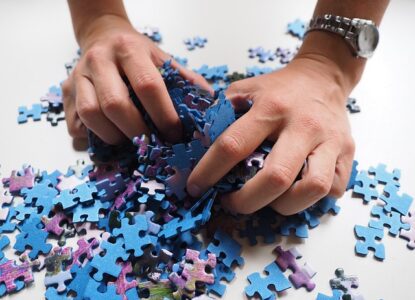What type of personalities are on my team? How to bring out the best in every person? How to get to know each other more deeply? These are the questions that every manager probably asks themselves when they start to lead a new team. Undoubtedly, a team day with the help of a test or other tool is a good solution here to help the team get to know each other more quickly and to significantly speed up the team’s processes in order to reach the effective teamwork phase faster.
Which tool or test to choose for the team day? There are various personality tests to choose from (Gallup Strengthsfinder, Wopi, Tripod, etc.) and behavioral preference analyzes (DiSC, Belbin, etc.) on the market. Which one you choose depends on where you are with your team and what the challenges are at the moment.
What is the difference between a personality test and a behavioral preference analysis?
- A personality test measures how a person thinks, feels and behaves, in other words, what their basic nature is, who they are.
- The analysis of behavioral preferences measures how people behave in different situations and how they behave, for example, under pressure.
- Personality generally does not change over time, but a person’s behavior changes when the people or the situation around them change.
- It is recommended to take the personality test once. But the analysis of behavioral preferences every time the environment changes.
When to choose personalities for team development day?
The personality test for the team development day is perfect if you don’t yet know which personalities are in your team, for example if you have taken over an already functioning team as a new manager.
The personality test will help you find out:
- Who is a person and what are their top strengths?
- What roles do they enjoy playing the most?
- What motivates and demotivates them?
- What are the blind spots of each strength and how do you balance your strengths?
- What does the person bring to the team that is unique and what they need to perform at their best?
- What are a person’s lesser talents and which people can best complement each other in a team?
When to choose behavioral preference analysis?
If you know your teammates well and know what kind of personalities they are, but you want to understand why one or another team member behaves in one way or another.
Behavioral preference analysis helps:
- How does a person behave with their colleagues and teammates?
- How does stress affect their behavior?
- Does the current situation create tension in them?
- What approach could support them?
- What motivates them?
- What are their strengths and limitations?
- What is their preferred communication style?
Gallup Strengthsfinder vs. Disc
As an example below, I will compare Gallup Strengthsfinder as one possible personality test and DiSC as one possible behavioral preference analysis tool. Let it be said that both tests are accurate. They simply measure different things – DiSC describes different behavioral styles of a person in different situations, and CliftonStrengths analyzes how a person thinks, feels, and behaves most naturally. So you can say that DiSC is more situational and CliftonStrenghts is personality. Both tests are used both to increase self-awareness and to improve teamwork. In both tests, in addition to individual results, a team profile can be created, which will help in future recruitments and team building.
Gallup Strengthsfinder and Disc experience story
Jaanika Rannula, coach, supervisor and management trainer, upwise.ee
I have done all kinds of different tests in my life, the tests described in this article I did during the last year. Both significantly increase self-awareness and provide food for thought on how to better understand yourself, observe yourself in different situations and develop yourself.
For Disc, the focus for me was the behavior style and its mapping. What are the downsides of my behavior, what motivates me and what makes me excited to take action. On one hand, it was like a confirmation of the well-known fact that I am a big social character (pure I), which perhaps has become pure thanks to my current work roles as a trainer, coach and supervisor. When I worked as a sales manager a few years ago and took the test, dominance (D) also came up. The training accompanying the test was good, where I got so-called recommendations and knowledge about how and what I need to consider more when communicating, so as to change my behavior.
GALLUP highlighted my strengths. What am I very good at, what are my capabilities, what are their background strengths, expectations and needs. There were many aha moments and new discoveries for me here, why I have made certain choices and decisions in my life. Coaching following the test was also very important here, which helped to make better sense of the test and create connections.
In fact, both teach and provide tools to better notice and understand the reasons behind one’s own and others’ behavior. In the case of Gallup, the list of strengths is very long, which gives a broader understanding of one’s nature and helps to analyze more how to improve one’s work ability. In the case of the Disc package, there are many recommendations on what to do differently in different situations, at the same time, gallup is more like coaching, which asks questions and makes you analyze yourself and look for solutions and opportunities yourself.
While the disc confirmed the fact, the gallup deepened my understanding of my behavior patterns and roles, that these very strengths can also be my weaknesses. Both tests and materials help a lot to understand other people’s priorities and the differences between people, that is, to increase empathy and mutual understanding that you see things this way, I see things this way, because we are motivated by different things. Also, both tests increase my ability to adapt to changes, different situations, organizations or challenges.
Among my clients, there are loyal users of both tests: there are managers and organizations that have implemented the disc right across the organization in their leadership model, and others who use the Gallup strengths test from the moment of recruitment. Personally, Gallup gave me more new insights, but as I mentioned, I have been deeply involved in self-analysis for many years.
All in all, all kinds of tests help to increase a person’s self-awareness, understand other people better, improve cooperation and become a better self-leader. Which test to choose depends on where you are with your team:
- If you are a new leader in a functioning team, it helps to understand the personalities of who is in your team faster.
- If you are looking for answers as to why a team member behaves in one way or another, it is worthwhile to use behavior preference analysis.
Comparison table
|
|
CliftonStrengths |
DISC |
|
What is it and what does it measure? |
CliftonStrengths is an online personality test that measures how a person thinks, feels and behaves most naturally.
The 34 natural talents are divided into 4 domains: strategic thinking, influencing/inspiring, building relationships, executing. A person is most influenced by the TOP5 natural talents, which have a total of 278,256 different possible combinations, because each person is unique.
Source: |
DiSC is a model created to explain human behavior that describes different behavioral styles. The abbreviation DiSC is formed from the first letters of the English names of four basic human behavioral dimensions: (D)ominance – Dominant (i)nfluence – Social (S)teadiness-Stable (C)onscientiousness – Analytical Under each basic dimension, there are 3 behavioral styles. Source: |
|
What will the test help you and your team achieve? |
Source: |
Source: |
|
How many different test types are there? |
Source: www.gallup.com |
Source: |
|
How many questions does the test contain and how long does it take? |
177 even statements Taking the test takes approx. 40 min Source: |
Depending on the type of test, 24-80 questions. Taking the test takes approx. depending on the type of test. 8 min – 15 min. Source: https://www.discprofile.com/ |
|
How often should the test be done? |
In general, CliftonStrengths test results do not change significantly over time. It is recommended to repeat the test if you took the previous test before or after a traumatic period, or if for some reason you did not answer the questions honestly or were otherwise disturbed during the test. Source: www.gallup.com |
It is recommended to repeat the DiSC personality test over 2 years. Source:www.discprofiles.com |
|
In which languages is the test available? |
More than 25 different languages, including English, German, Russian. The test is not available in Estonian. Source: www.gallup.com |
More than 60s in different languages incl. Estonian Source: https://www.thomas.co/assessments/DISC-test |
|
The birth story of the test |
The CliftonStrengths test was first introduced in 2001, when Don Clifton, a psychologist known as the father of strengths, published the book “Discover Your Strengths” based on 25 years of research. CliftonStrengths analyzes people’s skills, knowledge, abilities, attitudes and personality traits and categorizes them into 34 themes. In 2007, StrengthsFinder 2.0 was released, becoming an enhanced version of the assessment used today.
Source: www.gallup.com |
The DiSC theory originated with the American psychologist William Moulton Marston, who published the book “The Emotions of Normal People” in 1928. Marston formulated DISC theory based on his observations of human behavior. In the 1950s, industrial psychologist Walter Vernon Clarke adopted Marston’s theory and created the first behavioral assessment tool. In 1992, the Inscape publishing house created a new personality behavior assessment tool based on the DiSC theory, which is still in use today.
Source: |



